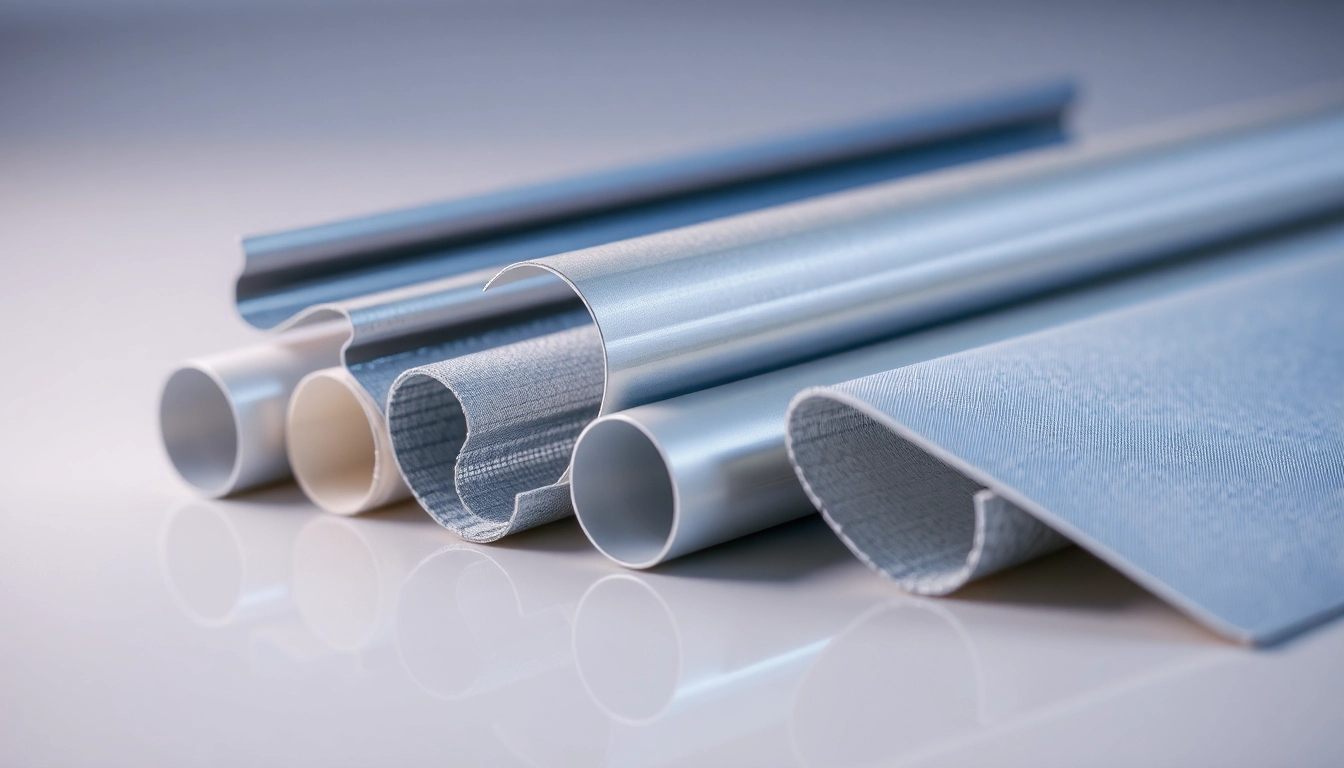Understanding Thermal Management Materials
What are Thermal Management Materials?
Thermal management materials are specialized substances designed to regulate heat within various systems, particularly in electronic devices. Their primary function is to dissipate heat generated by electronic components, thereby maintaining optimal operating temperatures and ensuring longevity. These materials include a range of products such as thermal conductive pastes, gels, adhesives, gap fillers, thermal interface materials (TIM), and phase change materials (PCM), each engineered to fulfill specific thermal management requirements.
In the realm of electronics, thermal management materials play a critical role. The efficient management of heat helps to prevent overheating, which can lead to component failure and reduced performance. Effective thermal materials enhance thermal interface performance, which improves heat transfer between devices, ensuring they operate within their designated thermal ranges.
Importance in Electronics
The importance of thermal management materials in electronics cannot be overstated. As devices become smaller and more powerful, they generate significant amounts of heat. Effective thermal management is essential to prevent undesirable thermal buildup, which can affect the functionality, reliability, and lifespan of electronic components. Poor thermal management can lead to performance degradation, including reduced processing speed and increased risk of component failure.
Furthermore, efficient heat dissipation can improve energy efficiency, thereby extending the operational lifespan of products while reducing their overall environmental impact. In industries where high reliability is paramount, such as aerospace and automotive, the necessity for effective thermal management materials is even more pronounced.
Common Types of Thermal Management Materials
Several different types of thermal management materials are available, each tailored to specific applications. Key categories include:
- Thermal Interface Materials (TIM): These include thermal pastes, pads, and adhesive materials that are applied between heat sources and heat sinks. They enhance the thermal contact area and improve heat transfer efficiency.
- Gap Fillers: These materials are used to fill air gaps between components, ensuring uniform thermal contact. They come in various forms, including soft conformable pads that adapt to surface irregularities.
- Phase Change Materials (PCM): These materials absorb, store, and release thermal energy as they change from solid to liquid and vice versa. They are useful in applications requiring thermal buffering.
- Thermal Greases and Adhesives: Formulated for optimal thermal conductivity, greases and adhesives bond components together while efficiently transferring heat away from heat-generating parts.
Key Features of Thermal Management Materials
Thermal Conductivity Ratings
Thermal conductivity ratings are fundamental attributes of thermal management materials. Measured in watts per meter-kelvin (W/mK), these ratings indicate how effectively a material conducts heat. High thermal conductivity is desired in scenarios where rapid heat dissipation is necessary. For example, metals like copper and aluminum exhibit high thermal conductivity and are often employed in heat sinks.
Conversely, materials like silicone rubbers may have lower thermal conductivity but are chosen for their flexibility and conformability, making them suitable for various applications where a perfect fit is essential.
Durability and Longevity
Durability is another crucial factor when selecting thermal management materials. They should maintain their thermal performance over time, even under varying environmental conditions and mechanical stresses. For instance, materials exposed to high temperatures or harsh chemicals should not degrade, thereby ensuring the integrity and performance of electronic devices throughout their lifespan.
Additionally, thermal materials often need to withstand mechanical forces, vibrations, or thermal cycling. Choosing durable materials that can endure these stresses without deteriorating is vital for maintaining electronic reliability.
Environmental Resistance
Many applications demand thermal management materials with specific environmental resistance properties. Resistance to moisture, temperature fluctuations, and exposure to chemicals or UV light can significantly influence material choice. For example, aerospace applications require materials that can operate in extreme temperatures and weather conditions without losing effectiveness.
Choosing the correct thermal management material includes evaluating its environmental stability to ensure that it will continue to perform under specific conditions, thus safeguarding sensitive electronic components from potential damage.
Applications of Thermal Management Materials
Consumer Electronics
In consumer electronics, such as smartphones and tablets, thermal management materials are essential to prevent overheating. As devices incorporate more powerful processors and GPUs, the need for efficient heat dissipation systems increases. Thermal interface materials and gap fillers are typically used to help transfer heat away from critical components to heat sinks or other cooling systems.
For instance, the use of high-performance thermal pastes can enhance the connection between a CPU and its heatsink, ensuring optimal cooling performance during intensive operations like gaming or video rendering.
LED Lighting Solutions
LED technology has transformed lighting solutions, providing highly efficient illumination across multiple applications. However, LEDs generate heat that must be managed to prevent performance loss or early failure. Thermal management materials play a crucial role in dissipating this heat, maintaining optimal operating temperatures for LEDs.
Materials such as thermal pads and gap fillers are often used in LED lighting assemblies to improve thermal contact and ensure heat is conducted away from the diodes efficiently.
Aerospace and Automotive Applications
In the aerospace and automotive industries, the stakes for thermal management are incredibly high. Electronic systems in these sectors must perform reliably under extreme conditions and should comply with rigorous safety and performance standards. Thermal management materials used in these applications must demonstrate superior thermal performance, durability, and environmental resistance.
In aerospace, thermal interface materials are applied in critical systems to ensure dissipated heat does not compromise performance, while in automotive applications, materials ensure that heat from engines and electronic systems is effectively managed to prolong the life of vehicle components and enhance safety.
Choosing the Right Thermal Management Material
Factors to Consider
When selecting the most suitable thermal management materials for a specific application, several factors should be considered:
- Thermal Conductivity: Choose materials with thermal conductivity suited to the application’s heat dissipation needs.
- Mechanical Properties: Evaluate the mechanical strength required; materials must withstand operational stresses while maintaining thermal efficiency.
- Environmental Requirements: Consider the environmental exposure the material will face and ensure it can resist those factors.
- Thickness and Conformability: For applications with irregular surfaces, materials that can conform and fill gaps will provide better thermal contact.
Comparing Material Options
Comparing different thermal management materials requires an understanding of their properties and how they fit specific needs. For example, a thermal paste might be ideal for high-performance computing applications due to its superior thermal conductivity, whereas a thermal pad might be better suited for more flexible applications where conformability is critical.
Consideration should also be given to costs versus benefits; while high-performance materials may carry a higher price tag, they may save costs in the long run through improved reliability and decreased failure rates.
Common Mistakes to Avoid
When selecting thermal management materials, avoid the following common pitfalls:
- Underestimating Heat Loads: Failing to accurately assess the thermal load can lead to inadequate material choices.
- Ignoring Environmental Observations: Not considering environmental resistance can result in premature material failure.
- Overlooking Proper Application: Use of incorrect application methods can significantly impact the performance of thermal materials; follow manufacturer guidelines closely.
- Neglecting Material Aging: Materials may degrade over time; it’s vital to choose those with proven longevity for critical applications.
Future Trends in Thermal Management Materials
Innovations in Material Science
The ongoing evolution of technology drives innovations in material science, specifically in thermal management materials. Research is focused on developing new compounds that offer superior thermal performance while maintaining other essential properties like flexibility and environmental stability.
Emerging materials, such as graphene and other nanomaterials, promise to revolutionize thermal management due to their extraordinary heat conduction capabilities and lightweight properties.
Sustainability Considerations
Sustainability is increasingly at the forefront of material selection as companies strive to reduce environmental impacts. Innovations are underway to develop thermal management materials using sustainable materials or that can be recycled effectively at the end of their life cycle.
Moreover, energy-efficient thermal management solutions contribute to overall sustainability goals by enhancing device longevity and reducing energy consumption.
The Role of Technology in Evolving Needs
As technology continues to advance, the requirements for thermal management materials will also evolve. Innovations such as flexible electronics, wearables, and increased power densities in devices necessitate the continuous development of new materials that can address these challenges.
Overall, the interplay between technological advancements and material sciences will dictate the trajectory of thermal management solutions, leading to better-performing, more reliable, and environmentally friendly products.



